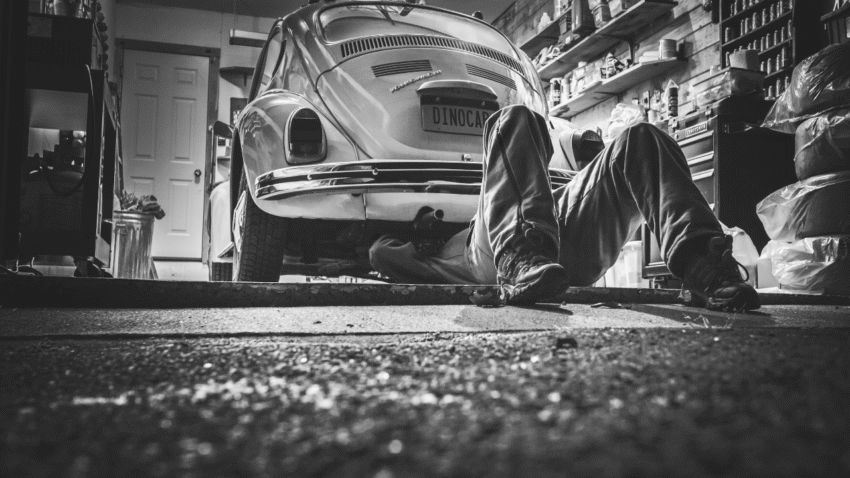Introduction
Garage walls often take more abuse than the walls inside your home. From car exhaust residue and dust to oil splatters and cobwebs, they can get grimy fast. If you’ve invested time and money into painting your garage walls, it’s important to clean them properly to preserve the finish. Learning how to clean garage walls without damaging paint will keep your space looking fresh and protect the paint from premature wear, fading, or peeling.
Why Cleaning Garage Walls Matters
Regular wall cleaning does more than improve appearance—it also:
- Extends Paint Life – Dirt and grime can break down paint over time.
- Improves Air Quality – Removes dust, cobwebs, and allergens.
- Prevents Stains from Setting – Quick cleaning stops oil or grease from becoming permanent.
- Creates a Brighter Space – Clean walls reflect more light, making the garage feel more open.
Using the right cleaning methods and products will help you maintain both cleanliness and the integrity of your painted surfaces.
Step-by-Step Guide to Cleaning Garage Walls Without Damaging Paint
1. Identify Your Wall Paint Finish
Knowing your paint type helps determine the safest cleaning approach:
- Flat or Matte Finish – Least resistant to scrubbing; requires gentle cleaning.
- Eggshell or Satin Finish – More durable than flat but still needs care.
- Semi-Gloss or Gloss Finish – Most washable and resistant to moisture.
If you don’t know your paint type, start with the gentlest method and work up as needed.
2. Gather Your Cleaning Supplies
- Soft-bristle broom or vacuum with a brush attachment
- Bucket of warm water
- Mild liquid dish soap or a gentle all-purpose cleaner
- Soft sponges or microfiber cloths
- Large, clean towels for drying
- Step ladder (if cleaning high walls)
- Rubber gloves for protection
Optional: White vinegar for mildew, baking soda paste for stubborn stains.
3. Remove Loose Dust and Debris
Start by clearing cobwebs, dust, and loose dirt from the walls:
- Use a soft-bristle broom to sweep from top to bottom.
- Alternatively, use a vacuum with a brush attachment for a faster, dust-free clean.
- Pay extra attention to corners and around shelving where cobwebs collect.
4. Test a Small Area First
Before cleaning the entire wall, test your cleaning solution on a small, hidden section. Wait until it dries to ensure the paint doesn’t fade, peel, or discolor.
5. Mix a Gentle Cleaning Solution
In a bucket, combine:
- 1 gallon of warm water
- A few drops of mild dish soap (avoid harsh chemicals or abrasive cleaners)
For walls with mildew, add 1 cup of white vinegar to the mix—safe for most painted surfaces.
6. Wash the Walls in Sections
- Dip a soft sponge into the cleaning solution and wring it out until damp (not dripping).
- Gently wipe the wall in a circular motion, starting from the bottom and working upward to avoid streaks.
- Rinse the sponge frequently to avoid spreading dirt.
Tip: For stubborn spots, apply light pressure—scrubbing too hard can damage the paint finish.
7. Rinse with Clean Water
After washing each section:
- Dip a clean sponge or microfiber cloth into a bucket of fresh water.
- Wipe the area to remove any soap residue, which can attract dirt if left behind.
8. Dry the Walls Thoroughly
Use large, clean towels to dry the wall after rinsing. This prevents water spots and helps you spot any missed areas.
9. Treat Stubborn Stains Carefully
- Grease or Oil Spots: Make a paste of baking soda and water. Apply gently with a sponge, then rinse.
- Mildew: Use a vinegar-water solution and lightly scrub the affected area, rinse, and dry.
- Scuff Marks: A damp magic eraser can work, but test first to ensure it doesn’t remove paint.
10. Maintain Your Walls Year-Round
- Dust walls quarterly to prevent buildup.
- Address spills or splatters immediately.
- Repaint high-traffic areas when the finish starts showing wear.
Common Mistakes to Avoid
- Using Harsh Chemicals
- Problem: Can strip paint or cause discoloration.
- Solution: Stick to mild soap and water unless dealing with specific stains.
- Scrubbing Too Hard
- Problem: Removes or scratches paint finish.
- Solution: Use gentle pressure and soft cleaning tools.
- Skipping the Rinse Step
- Problem: Soap residue attracts more dirt over time.
- Solution: Always rinse with clean water.
- Using Abrasive Tools
- Problem: Steel wool or stiff brushes can damage the paint surface.
- Solution: Use microfiber cloths or soft sponges.
- Not Testing the Cleaning Solution
- Problem: Unknown reactions with the paint.
- Solution: Test in a small, hidden spot first.
Extra Garage Tips & Hacks
- Install Splash Guards Behind Workbenches – Protect painted walls from oil, grease, or paint splatters.
- Apply a Washable Paint Finish – If repainting, choose semi-gloss or satin for easier cleaning.
- Add Wall-Mounted Storage – Keeps items off the floor and away from walls, reducing scuffing.
For more garage upkeep ideas, check out our guide on how to keep your garage clutter-free year-round so your clean walls stay visible and protected.
Conclusion
Cleaning your garage walls without damaging paint is all about using the right tools, gentle cleaning solutions, and a careful approach. With regular maintenance and prompt spot cleaning, your painted walls can stay bright and fresh for years.
Pro Tip: Schedule a wall cleaning at the start of each season—it’s easier to maintain a little at a time than to tackle years of built-up grime. Bookmark this guide as your go-to reference for safe wall cleaning.
